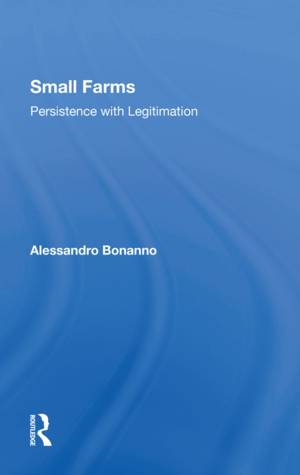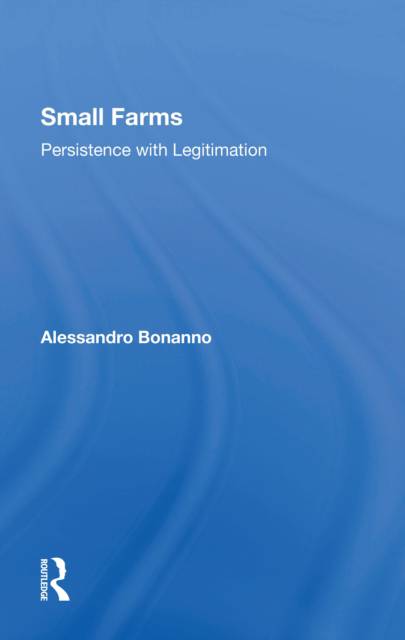
- Afhalen na 1 uur in een winkel met voorraad
- Gratis thuislevering in België vanaf € 30
- Ruim aanbod met 7 miljoen producten
- Afhalen na 1 uur in een winkel met voorraad
- Gratis thuislevering in België vanaf € 30
- Ruim aanbod met 7 miljoen producten
Zoeken
€ 40,95
+ 81 punten
Uitvoering
Omschrijving
Why do small farms continue to coexist with ever-larger farming operations in advanced Western societies? Through a thorough case study of Italy and a comparative analysis of small farms in the United States, Dr. Bonanno seeks to answer this question, exploring the complex relationships among farm family members' ideology and behavior, the small farm economic sector, and the interaction of small farms within the relevant spheres of society. He finds that, at the structural level, a lack of occupational alternatives and contradictions within both labor and land markets often force farmers to retain marginal farms despite personal dissatisfaction. At the ideological level, many farm families display deep attachment to the agrarian way of life and cite this as a fundamental reason for not leaving the farm for other work. Dr. Bonanno also analyzes the role of small farms within the social system and concludes that they serve a legitimative function. This legitimative role fosters contradictions within the social and economic systems that the state is unable to resolve, thus contributing to the continuation of a dual structure in agricultural development-Ö3/4large and very large farms at one end of the scale and marginal but persistent small farms at the other.
Specificaties
Betrokkenen
- Auteur(s):
- Uitgeverij:
Inhoud
- Aantal bladzijden:
- 228
- Taal:
- Engels
Eigenschappen
- Productcode (EAN):
- 9780367302863
- Verschijningsdatum:
- 31/05/2021
- Uitvoering:
- Paperback
- Formaat:
- Trade paperback (VS)
- Afmetingen:
- 150 mm x 226 mm
- Gewicht:
- 294 g

Alleen bij Standaard Boekhandel
+ 81 punten op je klantenkaart van Standaard Boekhandel
Beoordelingen
We publiceren alleen reviews die voldoen aan de voorwaarden voor reviews. Bekijk onze voorwaarden voor reviews.











